保險法第六十四條據實說明義務在台灣司法實務運作之情形
前言
按訂立契約時,要保人對於保險人之書面詢問,應據實說明,要保人故意隱匿或因過失遺漏或為不實之說明,足以變更或減少保險人對於危險之估計者,保險人得解除契約,其危險發生後亦同。但要保人證明危險之發生未基於其說明或未說明之事實時,不在此限,保險法第六十四條定有明文。細審本條項之法理可知,其最終之目的乃在於追求保險制度中「對價平衡」及「誠實信用」基本原則之實現。故若要保人或被保險人因故意或過失違反據實說明義務,致使保險人無法正確估計危險,則於保險事故發生前即可解除契約且無須返還已收受保費以懲罰要保人。反之,若保險事故已發生,則其是否和要保人或被保險人所未告知或不實說明者有相關連之關係可經調查得知。若有,保險人仍得解除契約,和保險事故發生前同。若無,則要保人或被保險人雖具有違反誠信原則之事實,但此事實經確定並未對保險事故之發生具有任何影響,換言之,針對此特定已發生之保險事故,要保人若能證明,未據實說明之事項實與保險事故之發生無關,並未造成保險人額外之負擔,「對價平衡」亦未受到破壞,保險人即不得復引保險法第六十四條第二項本文之規定解除契約(臺灣高等法院臺中分院九十一年度保險上易字第一號民事判決)。
從上開判決中可知悉據實說明義務在我國司法實務中適用之基本態度,保險法第六十四條規定於保險法第二章第二節中,屬於保險契約基本條款之一,主要內容為要保人對於保險標的危險狀況之據實說明義務,以便保險人能依其所述為正確之危險估計。此項規定按理於人身保險與財產保險均有其適用,然而根據法院判決資料庫中,卻發現主張適用本條之規定而解除契約者,大多為壽險業者,產物保險業者主張該條規定而進入訴訟者,約僅佔百分之五,其理何在?理由約略有二:其一為人壽保險要保之際,均有書面詢問事項之選填,然在財產保險中,需要要保人做書面詢問選填之情形則較為少見,以致縱使訂約後發現要保人有何不實告知之情形,亦無法據此解除契約。其二為財產保險標的物之危險狀況屬外現型,要保人對之較不易錯察,亦不易欺瞞,然在人壽保險時,保險標的為人之身體,危險狀況屬於內藏型,要保人較易錯察或欺瞞。
貳、據實說明義務
一、 據實說明義務
(一)、意義(保§64Ⅰ)
訂立契約時,要保人對於保險人之書面詢問,應據實說明。保險法第六十四條第一項訂有明文,因本條項之用語為「據實說明」,故「告知義務」又稱「據實說明義務」。
(二)、立法原則
我國保險法雖然未如德、英等國將「當事人須以最高程度之誠實及信用為之」、「保險契約為最大善意為基礎之契約」等字樣規定於保險法中,然根據學者見解與我國實務運作之結果,均肯認「誠信原則」為保險契約之基本原則而貫穿我國保險法相關條文當中,成為保險法第六十四條之基本立法原則。此外,保險之填補損害功能,需藉由要保人之保險費交付而產生,該保費即為保險公司承擔風險並於將來給付保險金之對價,本條制定之另一目的在於要保人應提供保險人估計危險所需之重要資訊,以便保險人能將相關危險轉嫁至保險費當中,以求得對價之平衡。對此,我國判決實務在說明保險法第六十四條中,多有將此二概念闡明敘述。
按保險法第六十四條之規定要保人之告知義務,主要是由於保險事業之經營,保險人有必要就其所擔負之危險,獲悉有關測定危險之必要資料,俾就各保險契約,分別測定其危險率,作為核定是否接受要保及應適用何種保險費率承保之參考。故對最能知悉其事實之要保人,課以重要事實之告知義務。故對於最能知悉其事實之要保人,科以重要事實之告知義務。若要保人不為正確之告知時,保險人得解除契約,以排除危險,其目的在保護保險人(最高法院八十六年度台上字第二一六一號民事判決、臺灣高等法院九十年度保險上易字第三號民事判決)。保險契約為最大誠信契約,倘要保人有故意隱匿,或因過失遺漏,或為不實之說明,足以變更或減少保險人對於危險之估計之情事,要保人如主張保險人不得解除保險契約,即應就保險事故與要保人所未告知或不實說明之事項並無關聯,且該事項已確定對保險事故之發生不具任何影響,保險人亦未因該未告知或不實說明之事項,而造成額外之負擔,對價平衡並未遭破壞予以證明始可(最高法院九十二年度台上字第一七六一號民事判決、最高法院八十八年度台上字第二二一二號民事判決、臺灣高等法院九十年度保險上易字第三號民事判決)。
又細審保險法第六十四條之法理可知,其最終之目的乃在於追求保險制度中「對價平衡」及「誠實信用」基本原則之實現。故若要保人或被保險人因故意或過失違反據實說明義務,致使保險人無法正確估計危險,則於保險事故發生前即可解除契約且無須返還已收受保費以懲罰要保人。反之,若保險事故已發生,則其是否和要保人或被保險人所未告知或不實說明者有相關連之關係可經調查得知。若有,保險人仍得解除契約,和保險事故發生前同。若無,則要保人或被保險人雖具有違反誠信原則之事實,但此事實經確定並未對保險事故之發生具有任何影響,換言之,針對此特定已發生之保險事故,要保人若能證明,未據實說明之事項實與保險事故之發生無關,並未造成保險人額外之負擔,「對價平衡」亦未受到破壞,保險人即不得復引保險法第六十四條第二項本文之規定解除契約(臺灣高等法院臺中分院九十一年度保險上易字第一號民事判決)。
(三)、說明義務人
A. 要保人-
要保人為保險契約之當事人,自負說明之義務,此觀保險法第六十四條第一項、第二項規定自明。又要保人為法人時,則義務人為法人之代表人。又保險契約係由要保人代理人為之時,判斷要保人是否違反據實說明義務時,究應以代理人或要保人所知悉或應知悉之事項為準?我保險法並無明文規定,倘直接依照民法第一百零五條之規定,以代理人之行為決定時,則縱使要保人對該據實說明之項目知悉或應知悉,保險人仍不得解除契約時,則有違保險法上之誠信原則與對價平衡原則。對此,德、奧立法例直接規定「保險契約由代理人或無權代理人所訂者,則保險人之契約解除權不僅限於代理人所知悉或惡意之考量,要保人之知悉事項或惡意亦在考慮範圍」。易言之,判斷要保人是否有違反據實說明義務,須以要保人或代理人二人所知或應知之事項為準。
為我最高法院對此看法,似乎仍僅從代理人之角度探討,而未進一步考量要保人有無據實告知。本件被保險人田世雄既於系爭保險契約之招攬人即其女田秋香交付之空白投保單上簽名,即應認被保險人乃授權其任職於保險公司之女田秋香代為填寫要保單相關事項,是以保險公司之業務經理徐接生就系爭保險契約不詳之處訊問田秋香,即係訊問被保險人田世雄本人。其不利益自應由被保險人田世雄負擔。茲田秋香並未依約告知被上訴人有關被保險人於投保前二個月內密集就醫十餘次之事實,則被上訴人以被保險人田世雄違反告知義務為由,於被保險人死亡後,取得醫院病歷摘要知悉上情後之一個月內,依保險法第六十四條規定暨系爭保險契約之約定,解除契約,依法發生解約之效力(最高法院九十年度台上字第二○六七號民事裁定)。
B. 被保險人-
當要保人與被保險人為同一人時,並無問題。惟於二者並不同一人時,被保險人是否負有據實說明之義務?針對此項問題,學者大多主張被保險人亦負有說明義務,蓋被保險人對於保險標的之危險狀況,知之最稔,故負告知義務,且同為大陸法系之德、奧、瑞士與日本,均規定被保險人負有告知義務。我國實務上先前均認為被保險人應負告知義務(最高法院六十七年度台上字第九一九號民事判決、司法業務研究會第三期研究意見)。然事實上,民國八十一年二月第一次修正保險法第六十四條時,第一項曾經修正為「訂立契約時,要保人及被保險人對於保險人之書面詢問,應據實說明」。其修正理由即謂「保險契約訂立時,據實告知除要保人外,被保險人亦應據實說明」。同年四月第二次修正本條時,又將「及被保險人」刪除,而恢復為第一次修正前之規定,可見本條僅規定要保人負有據實說明之義務,絕非對於被保險人之漏列,而係立法上之「故意刪除」。
對於要保人所提出之告知事項與義務,保險人收受並藉此決定是否承保與保費費率等項目,然因保險公司均為龐大的公司體系,要保人要保時,不可能與公司之代表人簽訂契約或收受告知項目,而多由其公司職員或代理人或業務员為之,其效力為何?則有待進一步之討論。
在要保人告知保險人之業務員時,早期見解認為保險外務員,通常係指受保險公司之囑託,為保險人招攬保險契約,以獲取傭金之人,保險外務員,其主要職務,為保險契約之招攬,並無締結保險契約之代理權,其性質,並非保險人之代理人。故外務員除經保險公司授權、或外務員之行為,構成表現代理之情形外,要保人對外務員之告知,其效力並不及於保險人(民國七十二年五月十四日司法院第三期司法業務研究會研究意見參照),惟近年來實務多認為業務员有收領權限。易言之,業務員知悉有關被保險人於本件要保前有感冒生病就診住院之情事,視同保險公司知悉上開情事(臺灣高等法院九十一年度保險上易字第二七號民事判決、台灣高等法院八十八年度保險上字第七號民事判決、臺灣高等法院臺中分院九十年度保險上字第二四號民事判決)。但在業務員與要保人共謀同意刻意不告知保險人應告知之重要事項時,要保人自始即無將重大事實透過業務員轉知保險公司之意,自難謂要保人告知業務員即係告知保險人,更不能以業務員為保險人之代理人或表見代理人,而認要保人將重大事實告知業務員,已盡其據實說明之義務(最高法院八十六年度台上字第一五八二號民事判決參照)。
受益人主張於填寫要保申請書時,已告知保險人業務員王美滿,曾國華患有精神病,曾在桃園療養院治療並服藥云云,似非虛妄。果曾國華或林美惠確曾告知王美滿關於曾國華患病之情形,而王美滿為保險人之業務員,乃保險人招攬保險之使用人,並代要保人填寫要保申請書,明知曾國華患有精神病,竟代為勾寫「無」字,能否謂曾國華就該書面詢問未據實說明,保險人得依保險法第六十四條規定解除契約?即非無疑。(最高法院九十一年度台上字第一三五七號民事判決)
又針對保險人為進行核保而委託其他之專業人士進行調查時,如醫生、公證人時,現行實務上認為上開輔助保險人並提供意見之人屬於保險人之代理人,亦有受領之權限(最高法院九十年度台上字第四九八號民事判決、台灣高等法院九十年度保險上易字第三號民事判決、司法院第三期司法業務研究會研究意見參照)。
(五)、說明時期
依保險法第六十四條第一項之規定:「訂立契約時,要保人對於保險人之書面詢問應據實說明」。當保險契約之要約與承諾在同一時點時,固無疑問。但在要約與承保並非在同一時點時,則何謂「訂約時」?係指要保人要保時?或保險人承諾時?我國實務上尚無類似案例,惟本人認為「訂立契約時」應解為「契約成立前」,即保險人為承諾之意思表示前。蓋在承諾之前,契約尚未成立,保險人尚得因要保人之補充告知而正確地估計其風險。
(六)、說明範圍與方法
說明範圍即告知義務人應向保險人告知之事項,然並非所有任何大小事項均須為告知,而是須符合下列要件者,要保人始有告知之義務。
A. 重要或重大事項
此可由本條第二項文義中「、、、足以變更或減少保險人對於危險之估計者、、、」看出。至於判斷要保人所應告知說明是否為重大事項時,則須依險種與契約內容或目的,客觀的以保險技術之觀點加以評斷,如在火災保險,有關建築物本身之資料、周圍環境、使用目的等;在竊盜險,被保險人從事營業項目、有無保全、標的物所在地之安全措施、所在地之管理等;在車險中,是否為事故車?之前有無遭竊之記錄?所有人之個人資料、車子年份與重置價格等;責任險中,有無遭受求償之賠案或可能發生之賠案?承保之責任地區(運送人責任險或產品責任險)?銷售產品種類或運送貨物種類?即所謂重大事項係指保險人得解除契約或拒絕理賠之條件,該事項有不實之說明或故意隱匿影響保險人對危險評估程度情形而言(臺灣高等法院九十二年度保險上字第四0號民事判決)。
至於告知義務人告知之方法,是以書面抑或以口頭方式告知,均無不可,然對於告知義務人而言,則面臨將來舉證上之困難。
B.書面詢問事項
保險法第六十四條第一項明定,要保人僅對保險人之「書面詢問」有據實說明義務,顯係採書面詢問主義,其目的在於限制義務人之說明範圍,與避免將來舉證之困擾。故保險人未以書面詢問者,縱屬重要事項,要保人亦無說明義務。此與採自動申告主義者,要保人之說明範圍不以書面詢問之重要事項為限,凡要保人所知悉而與保險人承擔危險有關之一切重要事項,均應依誠實信用原則為完全之告知,尚有不同(最高法院民事判決九十一年度台上字第一六八一號、台灣高等法院九十年度保險上更二字第一號民事判決)。
倘保險人所提供請求要保人繕寫之詢問表中有非屬於重大事項之詢問,且要保人又剛好未據實說明時,保險人得否據此解除契約?有學者認為「不得任由保險人提出非屬重大事項之問題,而於要保人違反該事項之據實說明為由,解除契約。申言之,對於非屬重大事項之詢問,要保人無據實說明之義務。原則上書面所詢問之事項,均推定為重要事項,惟要保人與被保險人得舉證推翻之」,且德國保險法第十六條亦認為書面詢問事項僅推定為重大事項。然最高法院認為「依保險法第六十四條第一項、第二項規定,要保人對於保險人之書面查詢應據實說明,該條所稱足以變更或減少保險人對於危險之估計,係指要保人之說明可影響保險人承保危險控制之重要事項,如保險人已具體標明詢問事項於書面上,即得視為重要事項,要保人當據實說明,否則保險人縱於危險發生後仍得解除保險契約」(最高法院九十一年度台上字第一三五七號民事判決、台灣高等法院九十年度保險上更二字第一號民事判決),顯然將書面詢問事項直接認定為重大事項,而不得以反證推翻之。
C.告知義務人知悉或應知悉之事項
保險法第六十四條第二項規定:「要保人有為隱匿或遺漏不為說明,或為不實之說明、、」,即須告知義務人出於故意、過失而違反告知義務,保險人始得解除契約,故在告知義務之歸責原則上,我國保險法顯採「過失主義」,此所謂對於書面詢問之故意隱匿,乃消極以不作為隱瞞實情,所謂為不實之說明,乃積極以作為虛構事實,均足使保險人陷於錯誤而為承保,亦即足以導致保險人被詐欺而為承保之意思表示(最高法院八十六年度台上字第二一一三號民事判決),至於過失遺漏,係指按其情節應注意能注意不注意,而漏未說明之情形。
D.非保險人明知或應知之事項
本條制定之目的在於避免保險人因要保人之未據實說明而影響對風險之估計,即某一事項為保險人所明知或應知而不知時,縱令要保人有違據實說明之義務,保險人亦不得解除契約。此項見解為我國實務與學者通說之見解。
告知義務人因故意或過失未為據實之告知時,保險法第六十四條第三項賦予保險人契約解除權,且規定危險發生後亦同。因此,如保險契約成立後,如保險人發現要保人反本條之規定時,保險人即得依本條規定解除契約,並依同法第二十五條之規定無須返還已收受之保險費。
惟保險事故發生時,「告知義務人不實說明或不為據實說明之事項」與「事故之發生」間是否須有因果關係,保險人始得解除契約?對此問題,保險法在民國八十一年四月修法時,於第六十四條第二項但書增訂:「但要保人證明危險之發生未基於其說明或未說明之事實時,不在此限。」,即明示採「因果關係說」之立場。而其修正理由則稱「要保人若能舉證危險之發生係未基於其說明或未說明之事實,要保人並未違反據實說明之義務,保險人自不得解除契約。本但書規定為保險人解除契約權之限制,要保人因此種限制當獲得更佳的保障」。
實務見解則認為保險契約為最大誠信契約,倘要保人有故意隱匿,或因過失遺漏,或為不實之說明,足以變更或減少保險人對於危險之估計之情事,要保人如主張保險人不得解除保險契約,即應就保險事故與要保人所未告知或不實說明之事項並無關聯,且該事項已確定對保險事故之發生不具任何影響,保險人亦未因該未告知或不實說明之事項,而造成額外之負擔,對價平衡並未遭破壞予以證明始可。亦即須就保險事故與要保人所未告知或不實說明之事項間之無關聯,證明其必然性;倘有其或然性,即不能謂有上開法條但書適用之餘地,保險人非不得解除保險契約。故保險法第六十四條第二項但書之規定,須保險事故與該未據實說明者完全無涉,始有適用,例如未說明己身有肝病,但死亡係車禍者。如未說明之事項與保險事故之發生有關聯、牽涉、影響或可能性時,即無該但書規定之適用,保險人依該條項解除契約,自不以未告知或說明之事項與保險事故之發生有直接之因果關係為限(最高法院九十二年度台上字第一七六一號民事判決、最高法院八十八年度台上字第二二一二號民事判決、臺灣高等法院九十二年度保險上字第二九號民事判決、臺灣高等法院九十一年度保險上易字第二七號民事判決、台灣高等法院九十年度保險上易字第三號民事判決、台灣高等法院八十九年度保險上字第二九號民事判決)。
又所謂「危險之發生未基於未說明或不實說明事實」之證明,依民事訴訟之舉證責任分配,當非指自然科學上之完全證明,或刑事訴訟法上無合理可疑之證明,而係在有優勢證據之證明下,即應認該待證事實為真,否則如強要要保人為超越優勢證據之證明,不僅有違民事訴訟中當事人對等原則,亦使上開保險法規定之立法目的因舉證責任之不當分配而難有適用餘地(臺灣高等法院臺中分院九十一年度保險上易字第一號民事判決)。
(八)、除斥期間
保險法第六十四條第三項前段規定:「解除契約權,自保險人知有解除之原因後,經過一個月不行使而消滅;或契約訂立後經過二年,即有可以解除之原因,亦不得解除契約。」,此項除斥期間須自保險人知悉有解除原因時起算,而保險人不在此期間時行使解除權時,其解除權即歸消滅,並不得以請求展期。此項除斥期間有無經過,縱未經當事人主張或抗辯,法院亦應先為調查認定,以為判斷之依據(最高法院八十八年度台上字第一四一一號民事判決)。
惟所謂「知有解除之原因」,依同法第二項規定,係指知悉要保人故意隱匿、或因過失遺漏、或為不實之說明而言,保險人是否知有解除之原因,應以其是否知悉要保人於投保前有無患病及就診之情形以為斷,而要保人於投保前究竟有無上開情形,並非僅以其於投保後有住院之事實即可推知。原審徒以保險契約要保申請書第十欄已記載保險人得向被保險人就醫之醫院查詢有關診療紀錄,及其已於八十五年十一月間即知悉被保險人住院之事實,即認其於八十六年二月二十七日解除契約已逾一個月之除斥期間,未免率斷(最高法院八十八年度台上字第四一二號判決、臺灣高等法院臺中分院九十年度保險上字第二四號民事判決參照)。
保險法第六十四條第三項前段規定:「前項解除權,自保險人知有解除之原因後,經過一個月不行使而消滅」,此項除斥期間須自保險人知悉有解除原因時起算。保險人向醫院查詢被保險人之就醫情形,經該院以簡便行文表檢送醫院病歷摘要報告,保險人始知悉被保險人於投保前已罹患紅斑性狼瘡。保險人旋以郵局存證信函為解除系爭契約之意思表示,並拒絕理賠,上訴人已於同年三月下旬收到該信函,為其所不爭,被上訴人解除契約自未逾上開規定所定之一個月之除斥期間(最高法院民事判決九十一年度台上字第七四八號、最高法院民事裁定九十年度台上字第二○六七號、最高法院民事判決八十八年度台上字第二二一二號)。
證人即友聯公司之經理李OO證稱友聯公司於翊茂三○六號船舶出險後一至二月即發現船齡不符。翊盈公司於投保時,就船舶之船齡有故意隱匿或為不實說明之情事,則依上開法條規定,自應於知有解除保險契約之原因後一個月內行使解除權,否則即不得解除保險契約。本件翊茂三○六號船舶,於八十一年七月一日至同年月二日發生船難,依證人李OO之證言,友聯公司於八十一年九月二日即已知悉有解除保險契約之原因,則應於八十一年十月二日前行使解除權,乃遲至八十一年十一月二十四日始行使解除權,其解除權已因除斥期間之經過而消滅,其解除權之行使自不生解除保險契約之效力(最高法院八十六年度台上字第一四六七號民事判決)。
又保險人行使此項解除權時,其應向何人通知?對此種情形,因保險法對解除權並無特別規定,則應適用民法之規定,按照民法第二五八條第一項規定:「解除權之行使,應向他方當事人以意思表示為之」,此在一般情形即為「要保人」,在要保人為法人時,較無疑問。但在要保人為個人,且發生保險事故而死亡時,因無「他方當事人」之存在,則其解除權之行使,應向何人為之?則不無疑問。如依照民法之規定來看,解除權之對象須限於契約當事人即其繼承人或契約地位之受讓人,則保險人須向要保人之全體繼承人為之,若向受益人為之時,則不生效力(臺灣高等法院臺中分院九十年度保險上字第二四號民事判決)。
惟查民法第二百五十八條第一、二項規定非強制規定,當事人非不得以特約約定解除權之行使方法。系爭保險契約基本條款第七條第三項約定:「公司通知解除契約時,如要保人死亡、居住所不明,通知不能送達時,本公司得將該項通知送達受益人。」,按保險金額約定於被保險人死亡時,給付於其所指定之受益人者,其金額不得作為被保險人之遺產,保險法第一百十二條定有明文,是要保人與被保險人為同一人,於要保人死亡時,其繼承人對保險契約並無任何權利義務關係,僅受益人有利害關係,上開特約約定於要保人死亡時,保險人解除契約,得將通知送達受益人,並無違反公序良俗或誠信原則,亦無顯失公平之情形,基於契約自由原則,應認該項約定為有效,受益人主張此項特約為無效云云,尚非可取。保險人依上開特約,對受益人為解除契約之意思表示,自屬有據(最高法院民事判決九十一年度台上字第七四八號、最高法院九十年度台上字第一七五九號民事判決、臺灣高等法院九十二年度保險上字第二九號民事判決)。
二、保險業運用本條應行注意之事項與建議
(一)、根據保險法第六十四條第三項規定,保險人如因被保險人告知不實行使解除權時,應於保險人知悉後一個月內為之,故有關要保人告知不實解除契約之處理有其時效上之考量。當保險公司發現有可能成立告知不實之情形,應盡速以存證信函方式發解除契約之意思表示。
(二)、為妥善評估風險,估算保費,並保護公司之基本權利,各險種應針對各險種之重大事項,草擬各險種所需使用「要保詢問表」,以避免業務員在承攬業務時,為求績效,與要保人通謀虛偽不為真正之陳述,或漏將重要事項告知公司,以致公司錯誤承保,而將來面臨高額之保險金求償。除此之外,理賠單位在收到理賠請求時,亦應積極了解要保人有無不實告知之情形,並要求被保險人提供必要之文件,或派遣專業之公證公司進行調查,以掌握最正確之資訊。
(三)、為避免要保人將來抗辯保險業務員未說明本條之法律效果,進而主張保險人不得依本條解除契約,保險人應在要保書或詢問書中以顯著字樣表明告知義務人未據實說明之法律效果,以避免爭議。
(四)、針對說明義務人是否包括被保險人之爭議,從八十一年二次修法來看,現行法律應屬刻意不將被保險人當作告知義務人範圍在內,然我國學者多主張被保險人亦有告知義務,在修法之前,為避免此項爭議,保險人應在保險條款中訂立所謂「被保險人視為要保人條款」,而使要保人與被保險人間彼此之行為與知悉事項具有相同之評價。
作者訊息:

李念國 JEFF LEE
Email: jeff@jtjb-taipei.com
Telephone: 886-2-27720567
